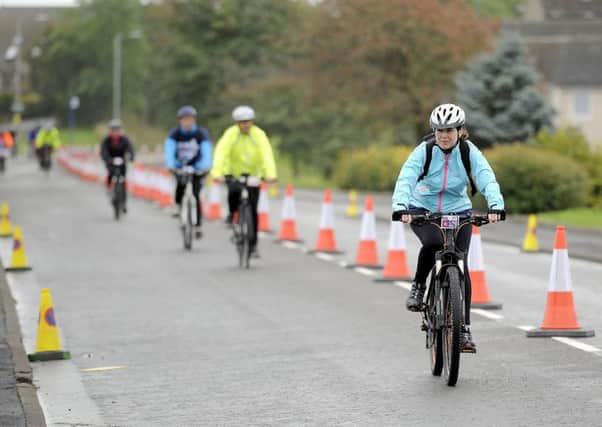Alastair Dalton: Boosting cycling's popularity must keep everyone on side


The annual opportunity to ride on closed-off roads between the country’s two biggest cities required more than 500 staff, course stewards and volunteers.
The scale of the event was also reflected in the logistics involved, including more than 10,000 traffic cones and signs being placed along the 45-mile course, including on stretches of the A8 and A73.
Advertisement
Hide AdAdvertisement
Hide AdThe ride, which has been staged for nearly two decades, is Scotland’s biggest cycle, attracting more than 7,000 people this year.
It came hard on the heels of miles of streets in both city centres being closed for thousands of cyclists, including many children, to pedal round.
In Glasgow, London-style rental bikes are a familiar sight and the pink People Make Glasgow fleet run by nextbike will be doubled in size on Monday with the addition of 500 bicycles and ten more sites from which to hire them.
Nextbike also operates in Stirling and at the Royal Bank of Scotland in Edinburgh.
Transport for Edinburgh is also planning to follow suit shortly, three years behind Glasgow, which launched its bike hire three years ago.
Monday will also see the next major segregated cycle route being announced as part of a design competition run by cycle developers Sustrans.
Projects in Edinburgh, Glasgow, Inverness and Stirling are competing for millions of pounds of funding.
Separating cyclists from other traffic is seen by ministers as crucial to encouraging more people to pedal, especially among novice and nervous riders.
Advertisement
Hide AdAdvertisement
Hide AdTo cap all that, the Scottish Government announced this week it would double spending on cycling and walking next year.
Arguably, the £80 million remains tiny compared to the hundreds of millions spent on roads for other vehicles, but at least it’s an improvement on the self-evident “record levels” mantra when ministers talk about increasing the cycling budget.
Cycling is a fun activity and can be the most convenient way to get about, but advocates must carry with them non-participants who are either sceptical or unconvinced by its worth.
That’s especially true when roads are closed to traffic, and in the case of Pedal for Scotland, effectively making several villages in the North Lanarkshire, Falkirk and West Lothian Council areas car-free zones for much of the day.
I’m told by councillors it’s been a major concern in some areas, such as among people who drive to work or church, and there have been changes to the route over the years to reduce the impact.
Any form of special event which disrupts traffic, from motorcycle gatherings to walks over the Queensferry Crossing, raises the hackles of motorists.
It is also impossible to hold a mass road cycling event without causing disruption and inconvenience.
However, residents of places like Glenmavis, Slamannan, Maddiston and Whitecross may have seen the closures as being imposed on them, and felt as excluded as having a railway line built through with no station.
But perhaps in the future, with continued enhanced spending on improvements like segregated cycle lanes where traffic is busiest, maybe such events will no longer be necessary?